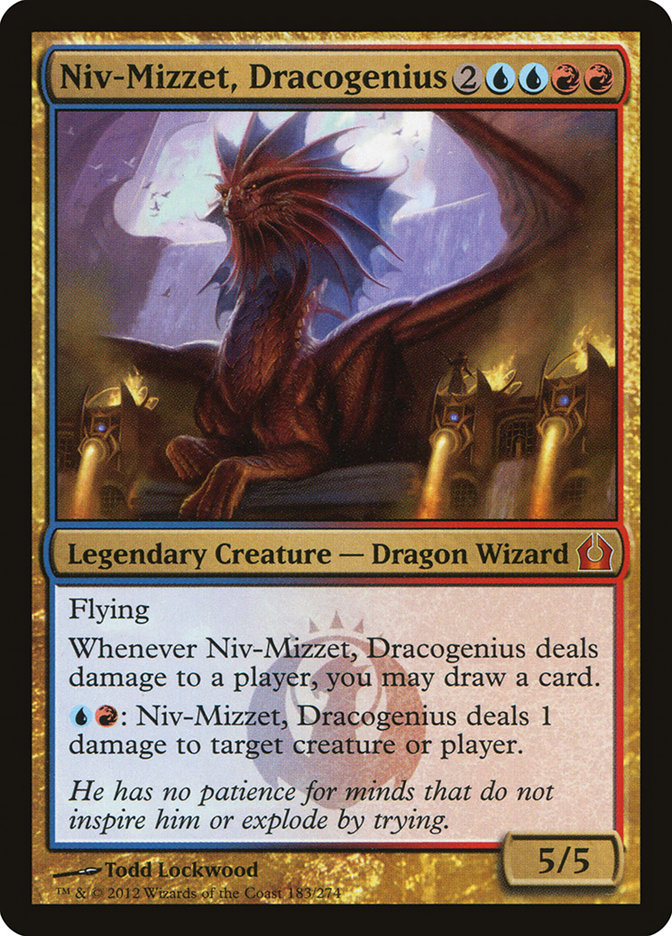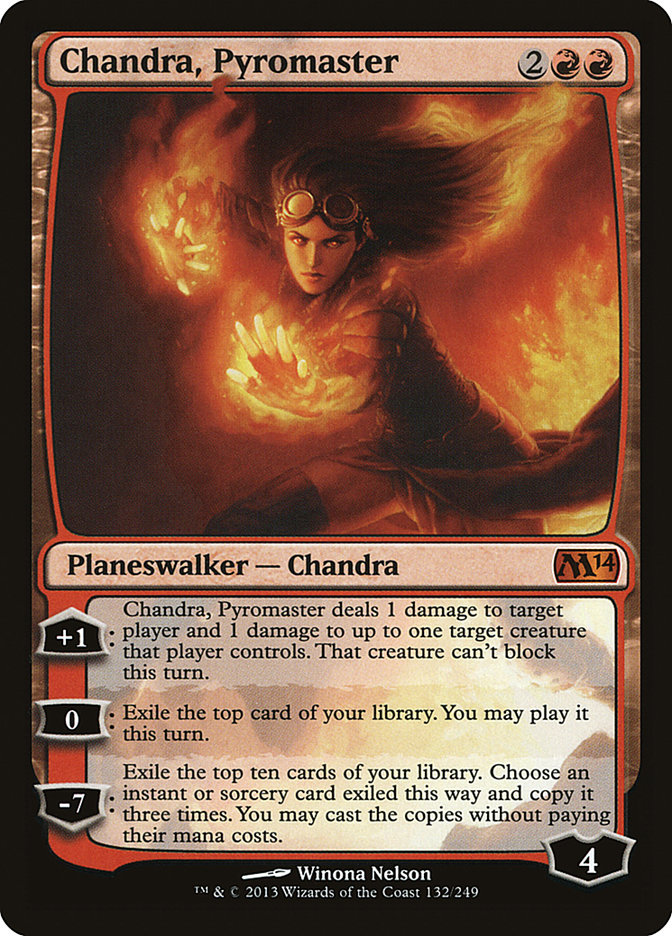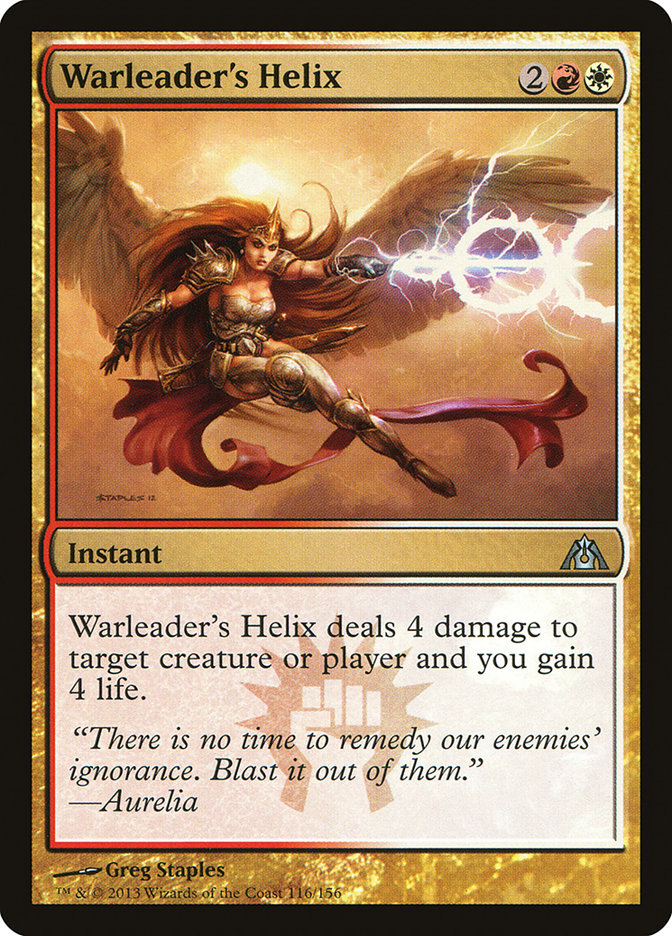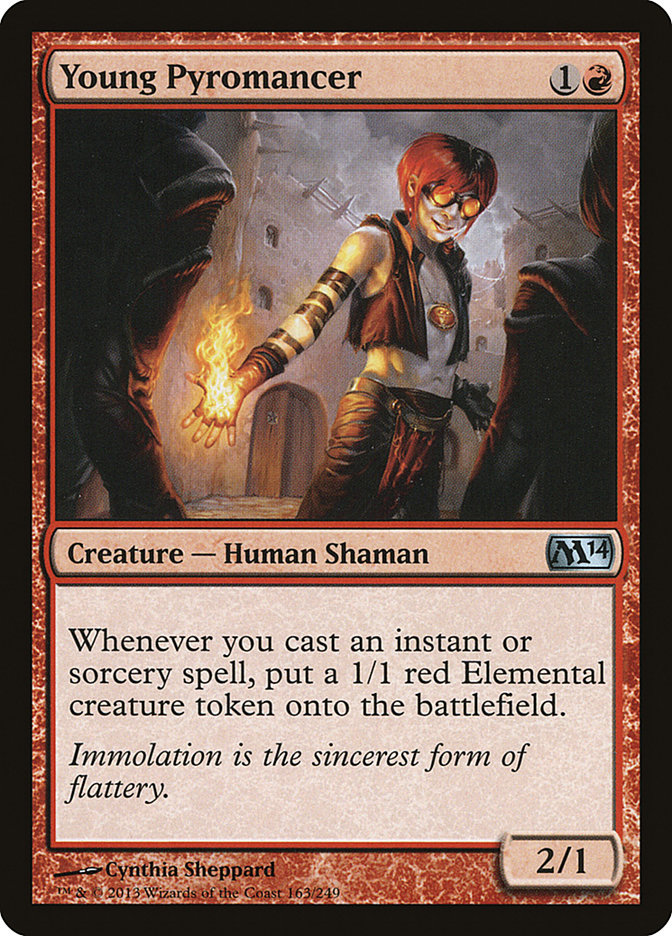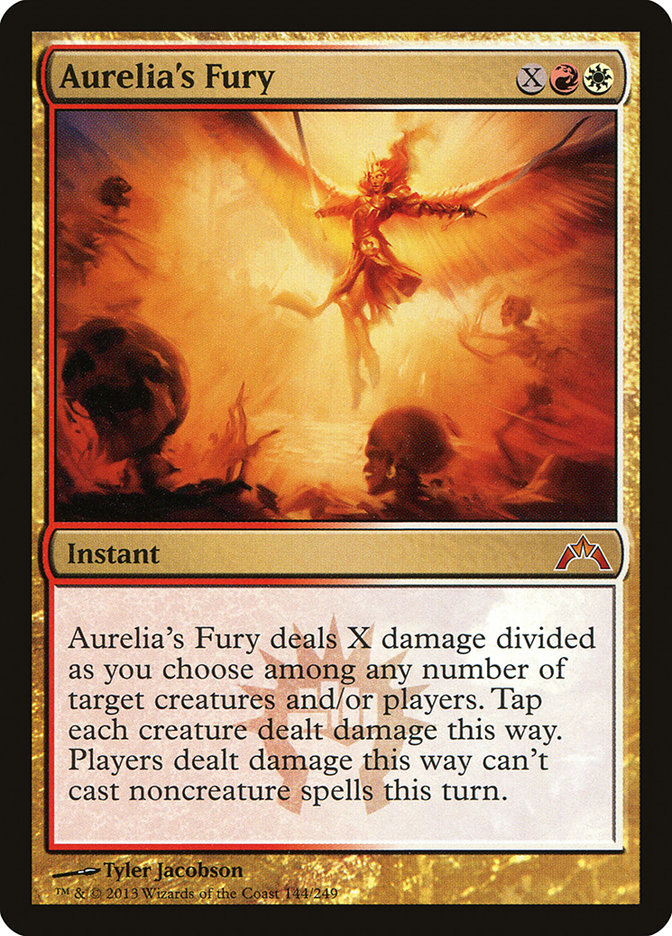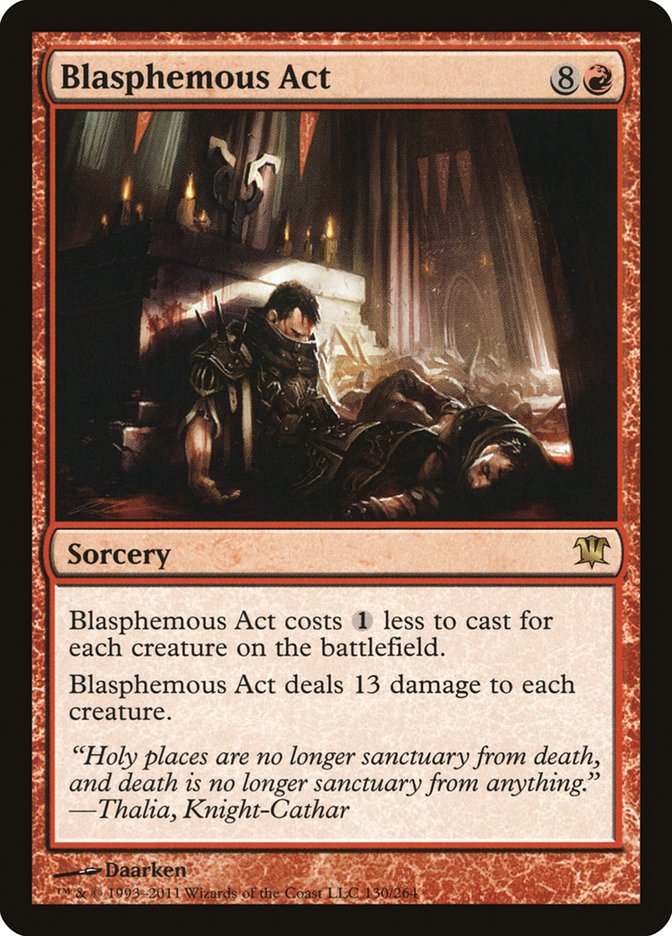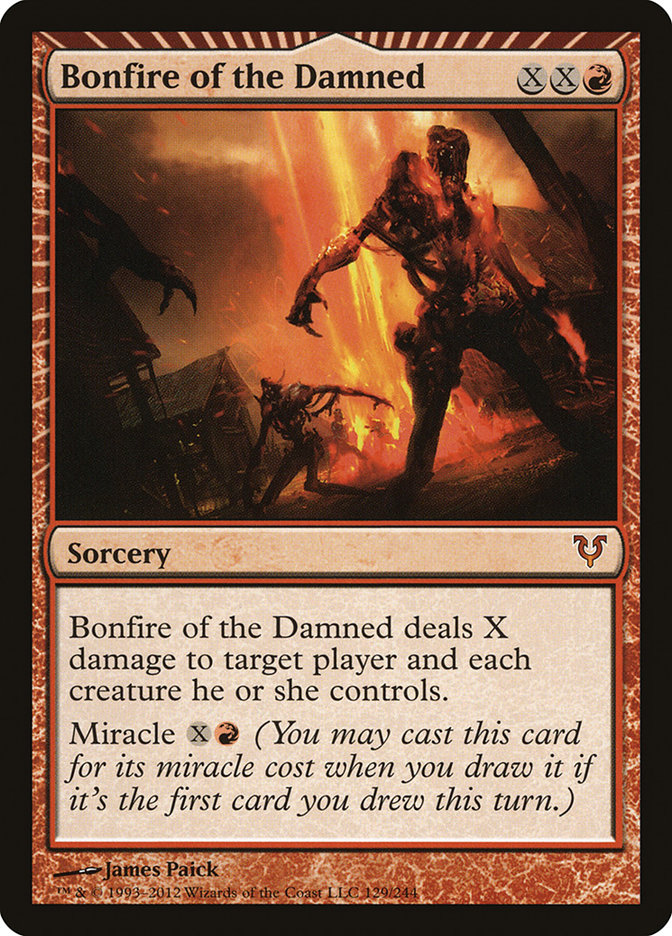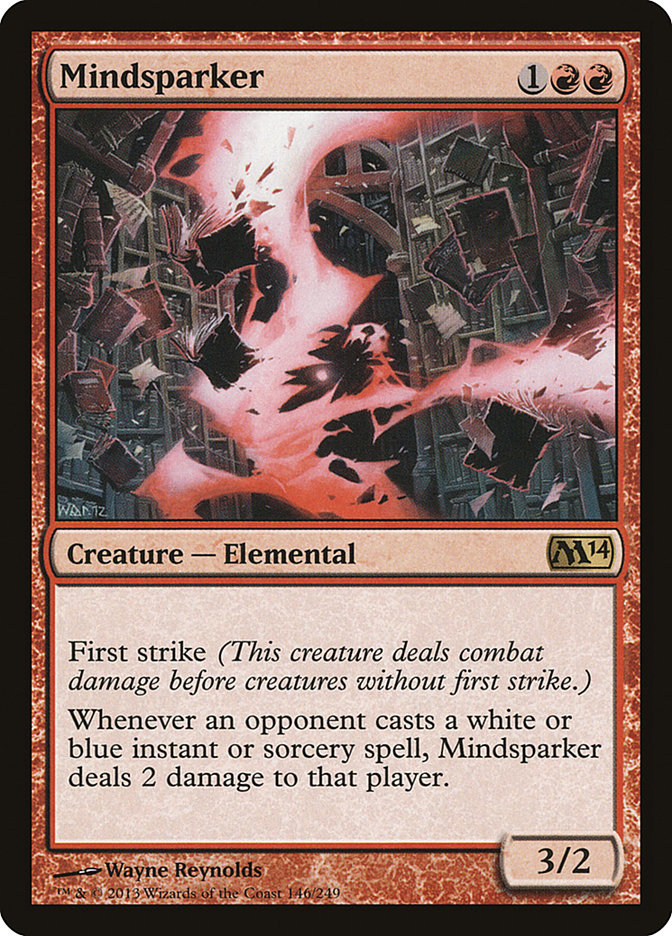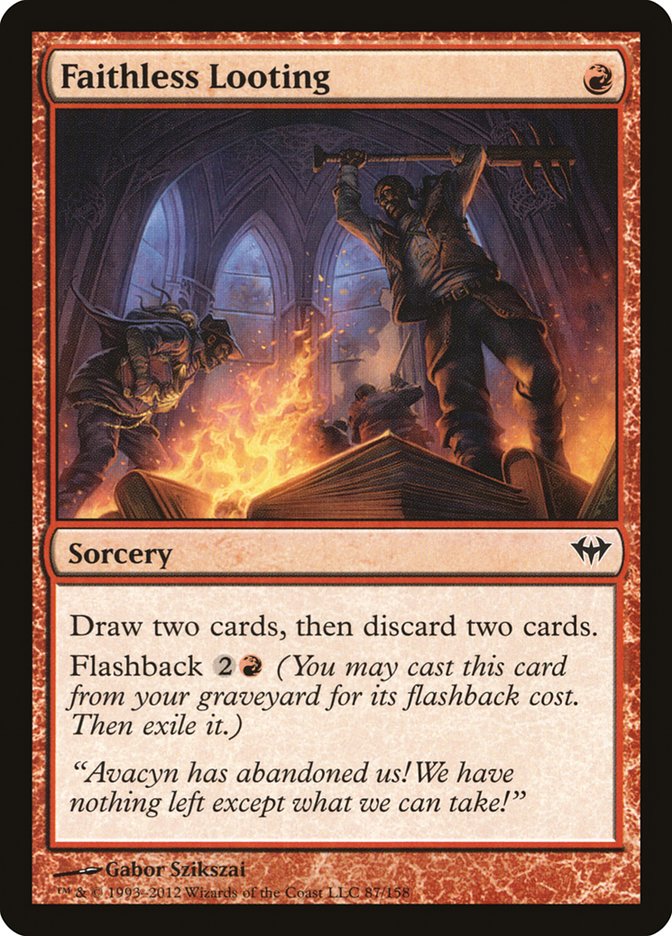You arrive about twenty minutes before the start time of a StarCityGames.com Standard Open, armed with your favorite deck and ready to go. You stand in line for about two minutes, are greeted by the awesome judges and staff working the registration panel, receive your deck box and tokens, and fill out that sweet 60+ you’ve been working on all week. You’re ready to show your friends that your Junk Reanimator deck can still rumble or that Jund deck can really benefit from those small changes in the sideboard to combat Burning Earth.
"I’m ready."
After finishing deck registration and giving it a quick double check, you browse around the dealer booth, looking at the sweet pieces of power and shiny foils. You check the alterists’ booths, looking at the awesome pieces they have on display. You’re fully immersed in what goes on almost every weekend at a StarCityGames.com Open Series event. The liveliness, atmosphere, and energy has you excited and eager to get started.
"I’m ready!"
You see a person near the main stage pick up a microphone, and you get that anxious feeling. "Attention players! Seatings for the player meeting are now being posted!" You quickly find your way to the board with the correct lettering, hoping to beat the majority of the crowd that’s going to populate the area. The closer you get, the more it seems like that just might happen. You’re met with a quick swipe of minor disappointment as that seemingly non-existent crowd has now brickwalled you from the sheet of paper. No biggie. You just wait patiently as you weave your way around the masses to find your number. One . . . seven? 171! Not too far.
You sit and greet the person sitting across from you as you pull out your registration sheet once more and attempt the "I’m checking again but trying not to show anyone" tactic. A small error is found and should be quickly corrected—if you can just remember where your pen is . . .
"I’m totally ready!"
The awesome judges collect the decklists, and you listen for further announcements for another minute or so. You see people start get up and walk about, and you do the same. After about a minute, you hear that pairings for round one are going up. Once again, you find yourself walking toward that board, hoping that the crowd doesn’t eat you alive this time. To no one’s surprise, that hope is dashed. You start to get the hang of moving through the crowd though, and you make it to the paper much quicker than before the player meeting. One . . . seven . . . nine! Got it. You walk in the same direction as last time, high fiving your friends passing by and wishing them good luck. You find your seat and greet the person sitting across from you. As you make acquaintances, you’re abruptly interrupted.
"Feature matches for this round . . . At Karn, table 179."
"!!!"
Your heart jumps for a moment. You’re feeling a mixture of startled, excited, and nervous. You just got called up for an on-camera feature match! You quickly gather your things and kind of power walk your way toward the feature match area. You sit down and briefly talk about how this is your first feature match and how cool it is. Then it sets in. Among the party of emotions that’s going on inside right now, a sinking feeling of nervousness begins to take over. You try to fight it, but it isn’t working.
"I’m . . . ready. I . . . I think."
You begin what turns out to be a long, grindy match that stretches all the way to three games. In the third game, you make a game-changing decision that ultimately costs you the match, and you realize it as soon as you make it. You’re defeated, even though the match isn’t technically over. You begin to slump backward, and the roller coaster of emotion begins. The match finally ends, you shake your opponent’s hand, and you . . .
"Why didn’t you make that play? You had him dead! Why didn’t you cast that? Didn’t you know he had that in his hand?"
"Why?"
"Why?!"
Every attempt to explain yourself is met with a mental block. You’re still smattered with emotion and stress. You want to take a breather, but the pairings for the second round are going up soon. You begin to tell yourself, "I messed up. I suck at this game. I can’t believe I missed that." Your friend passing by is shaking his head with half disappointment and half mockery. Your tournament is already over; you just don’t know it yet.
Some of us have been here already, and some of us have yet to experience the awesomeness that is a feature match. Watching one from home gives you this mindset that it’s very easy. The fact is that everyone has a different mental and emotional response to performing in front of multitudes of people, especially on a big stage like a StarCityGames.com Open Series. I listened to friends who have them on a regular basis tell me that it isn’t that big of a deal and went in with the thought that "if they don’t have a problem, why should I?" This is something I make sure not to do when I see my friends go through their first feature matches, and it’s actually become a pet peeve of mine.
Regardless of the subject—feature matches, deck choices, card choices, etc.—telling someone that things are one way based solely off your experience is one of the worst ways you could possibly give help. Just because you won matches with Into the Wilds in your Jund deck doesn’t mean that Into the Wilds is a good card in that deck. Just because you didn’t have a hard time in a high-pressure situation doesn’t mean the next person won’t. The exception doesn’t always make the rule, and you aren’t as much of an exception as you may think you are.
Many of us are fierce competitors. Our competitive nature also happens to garner some unfavorable habits. A good portion of us are trained to think that we have to be robots that never make mistakes. The problem lies within the scenario in which we do actually make mistakes. When we aren’t these perfect beings we want to be. Everyone responds to it differently. Some of us will dig deep to try to hide admission, while others may use the "well, it didn’t matter" excuse. I have the problem where I’ll think about it too much and let it affect me over the course of a round or match.
What if I told you that it’s okay?
It’s perfectly okay.
No, seriously.
For real human beings, making mistakes is one of the most effective ways of getting better. Hiding behind excuses is not. It’s difficult to know sequencing in certain combo decks without messing up sequences first (and no, having someone tell you what to do is not the same as doing it yourself unassisted). It’s tough to know how to go through an in-game situation if you’ve never experienced that situation before. One of the reasons why many of the best players in the game today are the best players is because of how naturally a wide range of situations come to them.
Not all of us have that ability or experience, however, and the faster we realize that we aren’t perfect, the faster we can work toward developing said ability and experience. Of course, the goal is to play as good as possible, and you shouldn’t settle for making anything but the best play. But oftentimes the best play you can make isn’t the best play possible, and there wouldn’t be a point in improvement if we were all able to make the best play possible all the time.
Back at the Invitational in New Jersey, my friend George was playing in the monstrous Standard Open. He made it very deep into the event and was in Top 8 contention in round 10 of eleven. He’s been piloting Jund forever, but being in the proverbial spotlight was something that he simply wasn’t used to. He played one of the more grindy games I’ve seen this year, battling through something ridiculous like triple Thragtusk, triple Sphinx’s Revelation, and an Aetherling. He wound up forgetting multiple opportunities to press his advantage and keep his established pressure going. In short, he was playing "scared." He ended up winning this match, but not without almost instantaneous ridicule from peers.
The very first thing I did after the match was tell him "pack up and come with me quickly." I did this because I knew exactly what was going to happen, and I felt that the first thing he needed was a breather and the last thing he needed was additional pressure. While it’s fine to talk about matches afterward (in fact, it’s greatly encouraged), approach and timing are everything, and depending on the person, doing it as soon as a big match is over while tensions are still high can be incredibly demoralizing. It is much, much easier to judge players and matches when you aren’t playing yourself. Putting a Sharpened Pitchfork to a player’s head after a match isn’t the best thing to do—unless you don’t mind it being done to yourself of course.
So how exactly do we handle the process of a feature match if we’ve never had one before? How do we handle those nerves, emotions, and tensions?
My first feature match was at a StarCityGames.com Standard Open in Washington D.C. in 2012 against Tommy Chafe. I don’t think it showed much on camera, but I was extremely nervous, nervous to the point where I was making unnecessary plays while far ahead. Later in that tournament, I played against Ben Lundquist, and again the nerves kicked my butt the entire time. I wound up making multiple key mistakes and basically crumbled under the pressure. I fought it as best as I could, but I just couldn’t beat both Ben and my own emotions.
As I started getting more and more feature matches, I began to realize that playing against two opponents was way too difficult to even consider doing. I was playing Two-Headed Giant by myself, essentially and metaphorically. I started to accept that I’m going to be nervous, probably every time I get called up to the area, and that’s alright. I’m going to miss triggers, punt games and matches, and misplay, and that’s alright. I’m going to drop cards in my hand, get warnings for thinking that my Burning-Tree Emissary can attack when it can’t, and decide not to cast Phyrexian Metamorph on my Thragtusk at the most opportune time, and that’s alright.
At the same time, I also know that I’m going to play my tail off each and every single round, not only in feature matches but every single match I ever play in Magic. That I’m never, ever going to get discouraged by outside factors that I can’t control, and that I’m going to take everything I can control and make the absolute best of it the way only I know how.
And that’s alright too.
The sooner we can take those emotions and tell them "hey, you’re pretty cool, let’s work through this match together," the sooner those emotions will reciprocate and say "you know what, you’re pretty cool too, so I’d love to figure this out with you and perhaps have some tea and cookies later."
Speaking of cool people, StarCityGames.com very own Chris VanMeter went ahead and laid out the groundwork for a variant of Big Red aptly titled "Big Boros." The idea of Big Boros was first presented to me by the genius himself, AJ Kerrigan, after which I went ahead and worked with it some more. I wound up building a form of it on stream before taking it to Game Day and winning with it. AJ has a pretty big knack for "opening the door" for variants like this and has been doing this all season.
Before we look more into the variant, let’s take a look at exactly what this archetype is, what it wants to be doing, and how it does it. Many have claimed that the format is solved right now, that the Jund, U/W/R Flash, and Domri-based aggro decks are the premier contenders at every single event. These are the decks to beat, and the format isn’t going to change much more.
The Big Red archetype is an attempt to throw a wrench in that whole plan.
Creatures (12)
Planeswalkers (4)
Lands (25)
Spells (19)

Creatures (12)
Planeswalkers (4)
Lands (25)
Spells (19)

I was never a huge fan of the Big Red decks in the past, mostly because they felt super clunky with no velocity and couldn’t really handle being on the back foot early, especially with decks like Caw-Blade and Delver running rampant.
This deck, however . . . this deck!
It didn’t hit me immediately, mostly because I was still grinding Domri-based aggro decks for a while, but after seeing Andrew Shrout and Adrian Sullivan talk about it some more, I knew I had found it. I knew that it was exactly what I wanted to be doing in Standard. I really enjoy playing cards that have lasting residual effects and force powerful, unfavorable "I don’t want to do this, but I have to" situations. Boros Reckoner and Burning Earth are perfect examples of that. In fact, many of the decks I’ve played featured some sort of card or cards like that.
I was a longtime U/W/R Flash pilot, and for a while I added Niv-Mizzet, Dracogenius as my large threat of choice when most were going with Aurelia, the Warleader or Thundermaw Hellkite. This gave me a tool that was very difficult to answer for those few weeks since everyone was playing Mizzium Mortars, Ultimate Price, and the like. Finding these sorts of pockets is part of why I really enjoy deckbuilding regardless of if the idea actually winds up working or not. After all, the only bad idea is one never attempted, right?
What makes Big Red a strong deck choice? As previously said, it makes full use of two things I look for in cards: raw power and residual effects. This deck can really shine from both angles, and any deck that is capable of a strong curve out draw can snatch games very quickly of course. It is also the best deck for my favorite planeswalker:
Make no mistake about it, Chandra is one of the strongest cards in this deck, not because of her ability to push your Hellriders and Reckoners through Smiters, Ghor-Clan Rampagers, Thragtusks, and push even more damage after their backswingbut primarily because of the much-needed velocity that she provides. The previous iterations of this deck did not play Chandra and look to be evolving to make the most out of her abilities.
The Big Boros deck is yet another evolution of this archetype, offering a light to moderate splash of white.
As explained in Chris’s article, one of the main attractions of adding white is Warleader’s Helix. I firmly believe that Helix is much, much better used here than in U/W/R Flash, mostly because of how much better the card is when used offensively. U/W/R Flash isn’t always able to use it to press an offensive advantage because it plays so many reactive spells and very few threats relative to the rest of the format. Essentially, it’s a pseudo Fog that kills a creature, which is still super powerful in its own right of course. Here, you trade some of that pseudo Fog effect for a noticeable slingshot effect* in addition to another effect that pushes your Hellrider through profitably.
*A slingshot effect is an effect or series that puts you directly ahead from a falling position in most situation, relative to the context of what your deck is trying to do. Blasphemous Act while controlling a Boros Reckoner is a good example of this.
I strongly feel that Chris is on the right track with the deck, but I know that he strongly dislikes playing Hellrider and maindeck Burning Earth. He explained that Burning Earth was one of the main attractions to playing the deck, which I agree with. This certainly doesn’t mean that we shouldn’t try new things, and not playing Burning Earth main does have its upsides. You get to play more reliable white sources in Boros Guildgate, and you get to play Mutavault, which is very strong in and of itself. This makes it easier on your sideboard as well, which contains even more white cards. While I do like this build a lot, I feel that we can make it even better without compromising what made the deck strong in the first place.
First off, I think that Hellrider felt weak in Big Red because there wasn’t a lot of ways to get it through the plethora of x/4s and combat tricks. Additionally, I feel that the ability to curve out and almost ignore what your opponent is doing (save a Shock or Searing Spear) is super important as well. Chandra doesn’t really give us that "you’re dead next turn" ability unless we’ve either already established a strong position or it’s the very last few points of damage. Hellrider is very good at doing exactly those, and I’m much more comfortable using Chandra as the support assist and Hellrider as the anchor.
The problem with this configuration is that we wind up with a lot of four-drops. Between Chandra, Hellrider, Warleader’s Helix, Burning Earth, and the occasional awkward turn 4 Boros Reckoner off of a Mutavault, things can get strained very quickly and early. I feel that this is best mitigated in any combination of these three ways:
- Shaving or cutting Mutavault entirely
- Cutting one of the four-drops
- Adding more early removal
Personally, I’m more of a fan of combining the first and third potential solutions. Chris went with the second option rather heavily, and it’s the one that utilizes Chandra the best I think. My choices allow me to use Burning Earth with minimal penalty and give us some additional time to find that fourth land drop. The problem is that without any earlier form of digging we can still often be stuck with three lands and a fist full of four-drops.
Here is my proposal:
Creatures (16)
Planeswalkers (2)
Lands (25)
Spells (17)

This build gives us more access to white in our maindeck and sideboard as well as allows for more consistency in our mana base. Burning Earth doesn’t hurt us nearly as badly here because of the eschewing of Mutavault and Boros Guildgate, so we’re able to maindeck it comfortably. Adding more early removal in Mizzium Mortars gives us more time to naturally find what we need, especially against the G/R Aggro deck, which is a tough matchup. The game plan remains the same, and we don’t have to worry too much about not being able to cast Boros Reckoner on time.
Shock gets the nod over Pillar of Flame, mostly because of how much more efficient Shock is in this deck. The only creatures we really care about exiling are Voice of Resurgence and maybe Blood Artist, and Voice of Resurgence isn’t hard to outclass and outrace in this deck. Shock also allows us to get back Chandra’s Phoenix under a Scavenging Ooze on our end step, which is more relevant than exiling things I don’t care much about.
Despite just realizing that my sideboard is almost entirely made up of white cards, I’m about 90% where I want to be with it. The basic Plains is a swap in for a Mountain for when you bring in those additional white cards, and playing a 26th land can help a lot against blue-based control decks. Rebuke is one of the few ways this color combination can deal with a Thundermaw Hellkite at instant speed in an efficient manner, so it gets the nod over the second Oblivion Ring (which is pretty slow already).
Assemble the Legion isn’t really needed as more than a one-of because its primary purpose is to be another high end finisher against the same decks you bring in that 26th land, though it is pretty cute with Hellrider. Blind Obedience is Chris’s way of slowing down the G/R deck, and I’m a huge fan of it. The fact that we’re playing Blind Obedience makes playing Thalia more sensible too. This configuration allows us to sideboard in macro-packages. For example:
Control Package
4 Thalia, Guardian of Thraben
1 Assemble the Legion
1 Plains
Aggro Package
4 Blind Obedience
1 Plains
2 Rebuke
1 Oblivion Ring
Attrition Package
2 Ratchet Bomb
1 Oblivion Ring
1 Assemble the Legion
1 Plains
1-3 flex slots (Blind Obedience and/or Thalia depending on matchup factors and opponent’s play style and habits)
Offense Package
4 Blind Obedience
4 Thalia, Guardian of Thraben
1 Plains
And so on.
Of course, we can’t have every card we like in a deck; we often have to make cuts.
Young Pyromancer
Young Pyromancer is a sweet card, but I’m perfectly fine with arguing to no end on why it just isn’t a very strong choice right now. There are too many ways for it to get run over, set on fire, or ignored almost completely. Jund is just way too effective at dealing with what Young Pyromancer is focused on doing, and G/R is a bit too fast for me to really set something like this up. The other problem with it is how it forces you to cast spells when you may not want to. It could work in a U/W/R shell (which I do like a lot), but here it’s simply too forced.
Aurelia’s Fury
I actually had one of these when I played in Game Day, and it still sucked. All of the effects that Aurelia’s Fury gives you are simply not needed in this kind of deck. It costs too much mana to kill relevant things, the Silence part is only really good in the corner cast of coupling it with Thalia, and the tapping of creatures is usually covered by Chandra. I’d play a Devil’s Play over this, mostly because it forces very similar situations though they less apparent.
Blasphemous Act
Simply put, it’s too situational and winds up sitting in your hand too often. Bonfire of the Damned is a lot more effective at pulling a Randy Orton and getting them "out of nowhere," and that requires one card (and still gets your Chandra’s Phoenix back).
Bonfire of the Damned
Speaking of! I opted not to play it because . . . well . . . what do you cut? Every removal spell is pretty much there for a specific purpose, and I’m not sure how much I actually need a Fireball or the "free win" factor that I can already generate. I think that builds that don’t utilize Chandra, Pyromaster are best suited for Bonfire of the Damned, but in this I don’t think it’s necessary.
Mindsparker
What exactly does this card do? It gets run over by Ghor-Clan Rampager and Domri Rade, and U/W/R Flash often doesn’t care about two damage. It also gets eaten alive by a Restoration Angel. Nope.
Faithless Looting
The interaction with Chandra’s Phoenix is cute, but that’s the only real time you can get anything out of it and even then it’s really tough to throw away damage for card selection. This isn’t a deck that really needs card selection, as it basically needs every single card in hand to surmount a strong advantage. I would play Wild Guess over this, and this is not the deck for Wild Guess.
Any Double White Spell
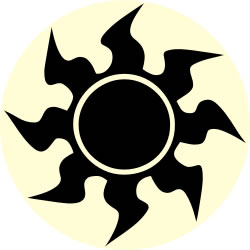

Double white spells get axed because there’s already a large strain on your white mana. I’m not a fan of trading consistency for a moderate upside, especially in today’s standard. Sorry, Aurelia.
This weekend is the StarCityGames.com Open Series in Baltimore, and hopefully I’ll see some of you there. Don’t sweat the feature matches, play your heart out, and have a blast!
Anthony "Pyromaster" Lowry
Twitter: @aulowry
twitch.tv/aulowry

